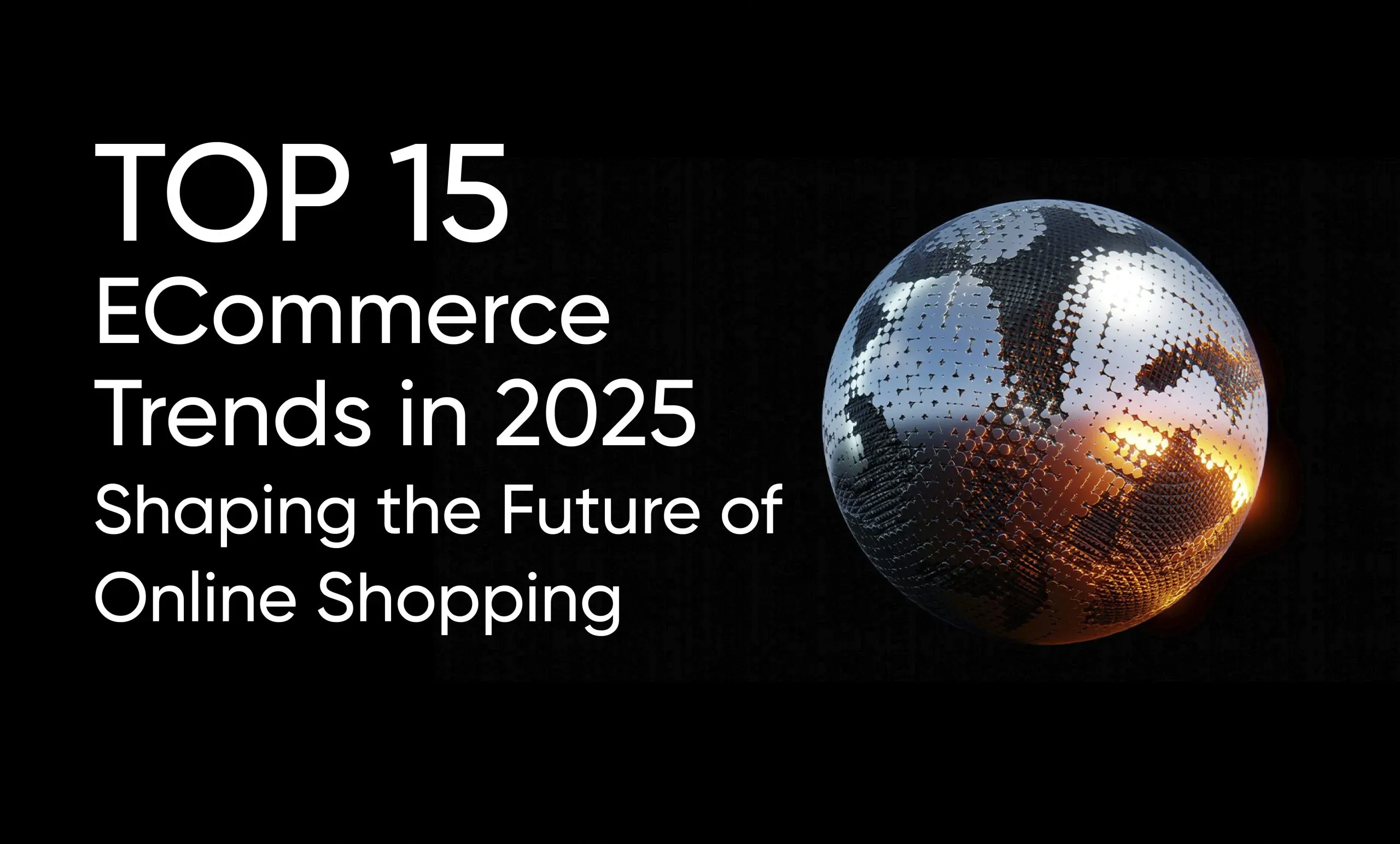E-commerce 2025 is poised for transformative shifts that will redefine how consumers engage with brands and make purchases. As technology evolves, the integration of AI in e-commerce will play a crucial role in enhancing customer experiences through personalization and automation. However, challenges such as supply chain disruptions and cybersecurity in retail will demand innovative solutions to maintain consumer trust. Brands will need to adopt effective customer loyalty strategies to stand out in an increasingly competitive marketplace, while also keeping an eye on emerging digital payment trends that cater to diverse consumer preferences. The future of e-commerce hinges on adaptability and the ability to leverage technology to create seamless, engaging shopping journeys.
The landscape of online retail is rapidly changing, with significant advancements anticipated by 2025. The integration of artificial intelligence and machine learning will revolutionize how businesses connect with consumers, providing tailored shopping experiences that resonate with individual preferences. As challenges like disruptions in supply chains and the need for robust cybersecurity measures arise, brands will have to innovate continually. Establishing strong customer loyalty will become essential for success in the competitive digital marketplace. Additionally, staying ahead of digital payment trends will ensure that retailers meet the evolving expectations of their customers, paving the way for a more streamlined shopping experience.
The Role of AI in E-commerce 2025
As we look towards E-commerce 2025, the integration of AI will be pivotal in reshaping the retail landscape. AI technologies, such as machine learning and natural language processing, will enable brands to analyze vast amounts of customer data to create hyper-personalized shopping experiences. This personalization goes beyond simple recommendations; it involves understanding consumer behavior, preferences, and even potential future purchases. By harnessing AI, retailers can not only boost sales conversions but also enhance customer satisfaction, ultimately driving long-term loyalty.
Moreover, AI will streamline operations by automating customer service through chatbots and virtual assistants. These tools can handle inquiries efficiently, reducing wait times and improving the overall shopping experience. In addition, AI-driven predictive analytics will help retailers anticipate inventory needs, optimize supply chain management, and respond swiftly to customer demands. As competition intensifies in E-commerce 2025, those businesses that leverage AI effectively will have a significant advantage in retaining customer trust and loyalty.
Navigating Supply Chain Disruptions in E-commerce
In 2025, ongoing supply chain disruptions will pose significant challenges for e-commerce businesses. The COVID-19 pandemic exposed vulnerabilities in global supply chains, leading to delays and increased costs. As retailers strive to meet customer expectations for fast delivery, they must develop more resilient supply chains. This includes diversifying suppliers, investing in local manufacturing, and utilizing advanced technologies such as blockchain for transparency and tracking. By optimizing supply chain logistics, businesses can enhance their operational efficiency and minimize the impact of disruptions.
Additionally, adopting flexible supply chain strategies will be crucial. Retailers should explore on-demand fulfillment models and just-in-time inventory systems to respond quickly to market changes. AI and machine learning can play a vital role in this strategy by providing real-time data on consumer demand and inventory levels. By leveraging these insights, businesses can better forecast needs and adjust their operations accordingly, ensuring they remain competitive in a rapidly evolving e-commerce landscape.
Enhancing Cybersecurity in Retail
As e-commerce continues to expand, cybersecurity will become increasingly critical for businesses in 2025. The rise of sophisticated cyberattacks poses significant risks to retailers, including data breaches that can compromise customer information. To protect against these threats, companies must prioritize robust cybersecurity measures. This includes implementing advanced encryption methods, multi-factor authentication, and regular security audits to identify vulnerabilities. By fostering a culture of security awareness among employees and utilizing cutting-edge technologies, businesses can safeguard their operations and customer trust.
Furthermore, as retailers adopt more digital payment trends, the need for secure payment processing becomes paramount. E-commerce platforms must ensure that their payment systems comply with industry regulations and best practices for security. By offering secure, decentralized payment options, businesses can enhance consumer confidence and reduce transaction abandonment rates. As cyber threats continue to evolve, ongoing investment in cybersecurity will be essential for maintaining customer loyalty and safeguarding brand reputation.
Customer Loyalty Strategies for E-commerce 2025
In the competitive landscape of E-commerce 2025, customer loyalty strategies will be crucial for success. With consumers having countless options at their fingertips, retailers must focus on creating meaningful connections with their customers. One effective approach is to implement personalized marketing campaigns that resonate with individual preferences and shopping behaviors. By utilizing AI-driven insights, businesses can tailor promotions, rewards, and communications to enhance the customer experience and foster loyalty.
Additionally, engaging with customers through loyalty programs that offer tangible rewards can significantly impact retention rates. Companies should consider innovative loyalty strategies, such as subscription services that provide exclusive access to products, discounts, or other benefits. By creating a sense of belonging and appreciation, retailers can cultivate long-lasting relationships with their customers, ultimately leading to increased lifetime value and brand loyalty in the evolving e-commerce landscape.
Digital Payment Trends Shaping E-commerce
As we enter 2025, digital payment trends will continue to reshape the e-commerce landscape. The growing popularity of cashless transactions is driving retailers to adopt various payment options, including mobile wallets, contactless payments, and cryptocurrencies. This shift reflects changing consumer preferences, as more shoppers seek convenience and speed during their online transactions. Retailers must stay ahead of these trends by offering diverse payment methods that cater to their target audience’s needs.
Moreover, ensuring a seamless payment experience is essential for reducing cart abandonment rates. Businesses should prioritize payment personalization, allowing customers to choose their preferred payment options and providing localized solutions that resonate with specific markets. By focusing on user experience and security, retailers can enhance customer satisfaction and drive conversion rates, positioning themselves favorably in the competitive e-commerce landscape of 2025.
The Impact of Social Commerce on E-commerce
As E-commerce evolves towards 2025, social commerce will play a pivotal role in shaping consumer purchasing behaviors. The integration of social media platforms with e-commerce functionalities allows brands to reach customers where they spend a significant amount of their time. By leveraging influencer partnerships and user-generated content, retailers can create authentic connections with potential buyers, driving engagement and sales. This trend emphasizes the importance of integrating social elements into e-commerce strategies to enhance brand visibility and consumer trust.
Furthermore, live shopping experiences will gain traction, allowing brands to showcase their products in real-time while interacting with consumers. This innovative approach not only enhances the shopping experience but also fosters a sense of community among customers. By embracing social commerce, businesses can tap into new revenue streams and build deeper relationships with their audience, ultimately securing a competitive advantage in the ever-changing e-commerce landscape.
Subscription-Based Models in E-commerce
The rise of subscription-based models is reshaping how consumers interact with e-commerce brands in 2025. These models offer convenience and value, allowing customers to receive products regularly without the hassle of reordering. From everyday essentials to luxury items, subscriptions cater to diverse consumer needs and preferences. Retailers can leverage AI to personalize subscription offerings, enhancing customer satisfaction and retention.
In addition, subscription services provide businesses with predictable revenue streams, enabling better inventory management and forecasting. This model encourages customer loyalty, as subscribers often feel more connected to the brand. By continuously innovating subscription offerings and ensuring a seamless experience, e-commerce businesses can thrive in a competitive environment while meeting the evolving demands of consumers.
The Future of Omnichannel Shopping Experiences
As we approach E-commerce 2025, the importance of omnichannel shopping experiences will continue to grow. Consumers increasingly expect seamless interactions across multiple channels, whether online, in-store, or through mobile devices. Retailers that successfully integrate these channels will provide a more cohesive and personalized shopping journey, driving customer satisfaction and loyalty. Strategies such as click-and-collect services and virtual fitting rooms will become essential as businesses strive to meet these expectations.
Moreover, leveraging technologies like AR and VR can enhance the omnichannel experience by offering immersive shopping options. Customers can visualize products in their environments or try on items virtually, creating a more engaging and informed purchasing process. By prioritizing omnichannel strategies and embracing technological advancements, retailers can position themselves for success in the dynamic e-commerce landscape of 2025.
Sustainable Practices in E-commerce
As consumer awareness of environmental issues grows, sustainable practices will become a key focus for e-commerce businesses by 2025. Retailers must prioritize eco-friendly initiatives, such as sustainable sourcing, waste reduction, and circular economy models that promote reuse and recycling. By adopting these practices, businesses can appeal to environmentally conscious consumers and differentiate themselves in a crowded market.
Additionally, transparency in supply chains will be crucial as customers increasingly seek information about the sustainability of their purchases. Brands that communicate their efforts in sustainability can build trust and loyalty among consumers. By integrating sustainability into their core business strategies, e-commerce retailers can not only contribute to a healthier planet but also position themselves as leaders in a socially responsible marketplace.
Frequently Asked Questions
What impact will AI in e-commerce have in 2025?
In 2025, AI in e-commerce will significantly enhance customer engagement through hyper-personalization. Brands leveraging AI will provide tailored recommendations, dynamic pricing, and automated customer service, which are expected to drive 45% of online purchases. AI will enable businesses to analyze vast amounts of consumer data, uncovering preferences that lead to higher customer loyalty and satisfaction.
How will supply chain disruptions affect e-commerce businesses in 2025?
Supply chain disruptions will continue to challenge e-commerce businesses in 2025, necessitating flexible and responsive supply chain strategies. Brands that adopt advanced AI and machine learning technologies will be better equipped to predict disruptions, optimize inventory management, and maintain customer trust through reliable service.
What are the key customer loyalty strategies for e-commerce in 2025?
To foster customer loyalty in 2025, e-commerce brands must prioritize personalized experiences driven by AI, seamless integration of online and offline channels, and engaging social commerce strategies. By knowing their customers’ preferences and delivering tailored content, brands can build lasting relationships and enhance customer retention.
What trends in digital payments can we expect in e-commerce by 2025?
By 2025, digital payment trends will increasingly focus on personalization and security. Businesses will need to offer localized payment options and adopt measures like two-factor authentication to enhance transaction security without compromising user experience. As cash usage declines, the adoption of digital wallets and contactless payments will rise.
How will cybersecurity in retail evolve by 2025?
Cybersecurity in retail will become more sophisticated by 2025, with businesses adopting advanced security measures to protect against increasingly complex cyberattacks. Strategies will include real-time monitoring, AI-driven fraud detection, and customer education on secure transactions, ensuring a balance between security and a seamless shopping experience.
What role will social commerce play in e-commerce by 2025?
Social commerce will play a pivotal role in e-commerce by 2025, leveraging influencer partnerships and user-generated content to drive sales. Brands will focus on creating engaging shopping experiences through live shopping events and interactive content, tapping into the growing trend of consumers seeking personalized and authentic interactions.
How will subscription-based models impact e-commerce in 2025?
Subscription-based models will expand across various categories in 2025, offering consumers convenience and tailored experiences. From everyday essentials to luxury products, these models will help e-commerce businesses establish predictable revenue streams while enhancing customer loyalty through curated offerings.
What innovations in e-commerce technology should we expect in 2025?
In 2025, e-commerce technology innovations will include enhanced AI capabilities for personalization, automation in supply chain management, and immersive shopping experiences through AR/VR. Businesses will increasingly use data analytics to understand consumer behavior, enabling them to adapt quickly to market changes.
How will businesses balance payment security and customer experience in 2025?
Businesses in 2025 will need to strike a balance between payment security and customer experience by implementing robust security measures, such as biometric verification, while ensuring a smooth checkout process. Clear communication about security practices will help build consumer trust without introducing friction.
What challenges will e-commerce face in 2025 regarding tax compliance?
E-commerce businesses will face challenges in tax compliance in 2025 due to the complexities of omnichannel shopping. As regulations evolve across jurisdictions, advanced AI technologies will be essential for real-time tax calculations, helping retailers navigate compliance challenges while maintaining customer satisfaction.
| Key Point | Description |
|---|---|
| Challenges | E-commerce will face supply chain disruptions, cyberattacks, and competition for customer trust. |
| Technological Advancements | AI and automation will reshape e-commerce, enhancing personalization and efficiency. |
| Social Commerce | Influencer partnerships and user-generated content will drive sales through platforms. |
| Omnichannel Integration | Seamless online and offline shopping experiences will redefine consumer interactions. |
| Subscription Models | Growth in subscription services across various categories will appeal to consumers. |
| Payment Innovations | Focus on secure, decentralized payments and personalized options to enhance user experience. |
| Fraud Prevention | Balancing security measures with user experience will be crucial to prevent fraud. |
| Tax Compliance Challenges | Advanced technologies will help navigate complex tax regulations in omnichannel environments. |
Summary
E-commerce 2025 will be characterized by a landscape full of challenges and opportunities for innovation. As brands adapt to supply chain disruptions and sophisticated cyber threats, the integration of advanced technologies like AI and automation will be essential. Companies that prioritize customer-centric strategies, seamless omnichannel experiences, and personalized payment options will thrive in this competitive environment. The shift towards social commerce and subscription models will further redefine consumer engagement, while effective fraud prevention strategies will ensure secure transactions. In summary, E-commerce 2025 will require businesses to embrace change and innovation to secure long-term customer loyalty.










